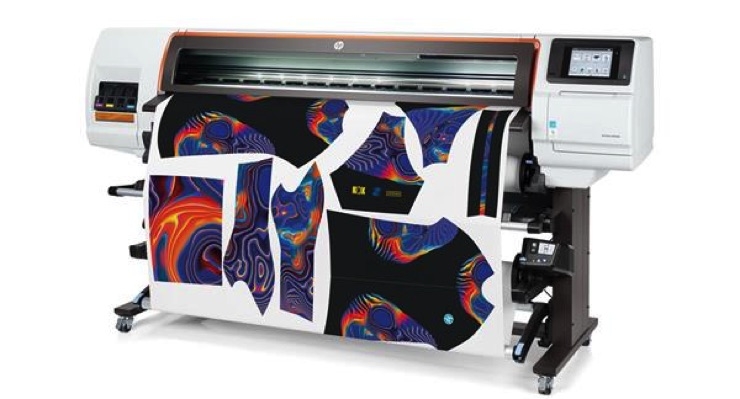How Dye Sublimation Printing Works
If you’ve been considering using dye-sublimation printing for your designs, you’ve probably wondered how the process works. There are some key differences between this process and traditional printing, including the use of heat-activated dyes. We’ll cover how the process works and transfer paper and ink to better understand this method. Once you’ve read this guide, you’ll be well on your way to maximizing your design production.
Dye-sublimation printing
When it comes to dye-sublimation printing, size matters, home dye-sublimation printers can print six-inch-by-four-inch photos in 45-90 seconds, while larger machines can take as little as 6.8 seconds to produce the same-sized photo. Despite the short printing time, the finished print is still completely dry when it comes out of the printer. For this reason, the speed is critical, as you need a machine with a large print bed, which is required to reach that high-quality result.
The dye-sublimation process requires a synthetic fabric or plastic. Natural fabrics cannot be used for dye sublimation printing because the gaseous ink passes through them straight away. Instead, synthetic fibers are bonded to the media. T-shirts, dresses, bathing suits, and other garments can be printed with dye-sublimation. The technique can produce high-quality images, whether you’re printing a T-shirt, a swimsuit, or a tablecloth.
On the other hand, screen-printing involves pushing ink through a mesh stencil. This process is often done on t-shirts and can be very affordable if you’re looking for a custom print. However, screen-printing involves many steps, including creating a new stencil for every design and color. It also limits your design to a few colors and is generally limited to one or two shades. By contrast, dye-sublimation printing allows you to combine multiple colors.
A dye-sublimation printer uses heat to transfer the ink to a material. The result is a vibrant and high-quality print that can be framed. The printing quality is excellent, and you can choose between full-color and monochrome images. In addition, dye-sublimation prints are easy to read. They’re also great for photo albums and calendars. But you should be aware that dye-sub printers can be expensive, and you should be prepared to spend more money to buy the necessary supplies.
The cost of a dye-sublimation printer depends on its size and capabilities. The lowest-priced large-format dye-sublimation printer was only around $20,000 a few years ago, and it didn’t include a heat press, which is necessary for dye-sublimation printing. Those early models of rotary drum heat press cost upwards of $40,000.
Heat-activated dyes
Sublimation printing works with heat-activated dyes to transfer images from paper to a substrate. The process involves varying pressure, temperature, and time to transfer the images to the substrate. The heat press machine activates the dyes at the molecular level. Common sublimation dyes activate at temperatures between 350 and 420 degrees Fahrenheit. These temperatures are generally appropriate for most sublimation materials.
As with any heat-activated dye, the longevity of the print depends on how it is cared for. It is best to clean the dye-sublimation print as needed but not soak it in water. The dyes are embedded into the fabric. Using high-quality tools to clean the product will help to extend its life. Heat-activated dyes for sublimation printing can last for many years.
If you have a heat-activated dye, you can find it in various colors. White dyes are not available in dye-sublimation printing. For best color reproduction, consider using rigid panels. Wood and metal surfaces do not have a white coating and may shine through the printed image. In addition, there are also multi-purpose sublimation transfer papers that can transfer images to textiles and hard substrates.
Home and commercial dye-sublimation printers can print a 6″x4″ photo in 45 to 90 seconds. Heavy-duty dye-sublimation printers can print a comparable size in six seconds. Both printers are fast, and the finished prints are almost completely dry when they come out of the printer. Heat-activated dyes for sublimation printing have become an extremely popular and versatile application in sign businesses.
The sublimation process produces a nearly permanent full-color print. Because the dyes penetrate the substrate at the molecular level, unlike the traditional printing method, they do not crack under normal conditions. The image is stored on a polyester ribbon that contains separate panels the size of the medium being printed. Heat-activated dyes are compatible with most printers. However, they may require a special dye subnet for best results.
Transfer paper
The manufacturing process for Transfer paper for sublimation printing involves the manufacture of a fibrous substrate. The surface treatment can be in-line or off-line and may consist of organic quaternary ammonium salts or epichlorohydrin polyamines. The composition is applied to the paper surface in quantities ranging from 0.2 to 15 grams per square meter. The transfer paper is preferably printable by inkjet printing but may be printed with a rotary press or a flexographic printer.
The sublimation process produces rich colors. Use a special polyester fabric or white 100% polyester material to produce these colors. Then, place the fabric on the heat press. The paper should be heated for 30 seconds at 375deg F / 190o C. Be careful not to smear the printed side of the fabric while you are heating it. Then, remove the paper from the heat press and place it on another surface.
Sublimation transfer paper is processed by various means in a commercial papermaking facility. The paper can have different weights that aid in drying the ink. The weight of the paper depends on the type of sublimation printing process. Heavyweight transfer paper typically weighs between 20 and 100 lbs/3,000 square feet. Lightweight transfer paper is more absorbent and has lighter weight. The weight range for Transfer paper for sublimation printing varies from 35 to 80 lbs/3,000 square feet.
When selecting a transfer paper for sublimation printing, remember to consider the type of substrate. High humidity will require 90-120 gsm, while low-humidity conditions will require less weight. Paper with a higher weight will not transfer the ink completely. It may also produce uneven patches of a design on moisture-sensitive materials. However, high-quality transfer paper will make a huge difference in your finished product.
The sublimation process can be difficult if you do not have the right transfer paper. The right paper can help you create a quality image that is clear and has good color fidelity. This process can be expensive, so you should shop around before purchasing. Once you’ve purchased a transfer paper, it’s time to look for a suitable printer. Many brands are on the market, but Epson and Ricoh are the most common.
Transfer ink
If you are interested in using transfer ink for sublimation printing for your next project, you should know several different ink options available. However, you will likely find the most success using a specifically designed brand for sublimation printing. Epson is a good example of an eco-friendly printer that uses tanks rather than ink cartridges. These printers are also easy to use and offer good results.
You should use high-quality transfer papers to get the best results from a sublimation printer. High-grade papers are best for most applications. You can also choose to buy a blank that is already coated to achieve the best possible results. And of course, the printer must be compatible with the specific type of paper used in sublimation printing. Generally speaking, these printers are compatible with sublimation inks.
The single-tank system is the most cost-effective transfer ink for sublimation printing. This method is faster than other forms of printing and requires less labor. Because the printing process is highly accurate, the results can be impressive. Moreover, the DPI and vibrancy are superior to those of other types of printing. The print quality of sublimation printing is also better than other forms. However, it’s important to note that it will not last forever, so choosing a quality product is best.
In addition to paper, transfer ink for sublimation printing requires a heat press that works at higher temperatures. A dedicated heat-press, such as a Cricut machine, will be ideal. While a simple tabletop model will work, it will likely not produce the best results. And you can expect to pay around $300 to get a good quality printer. The cost of transfer ink for sublimation printing is not prohibitively expensive, and you can get started on a project today.
The advantages of sublimation over other methods of printing include its versatility. You can create a simple black and white design or print an entire four-color photo. Sublimation printing also allows you to create highly detailed designs. A high-quality, professional option, sublimation printing allows you to create intricate designs and photos. When used with a Cricut Infusible Ink cutter, it gives you the same benefits as traditional printing but with more permanence.

